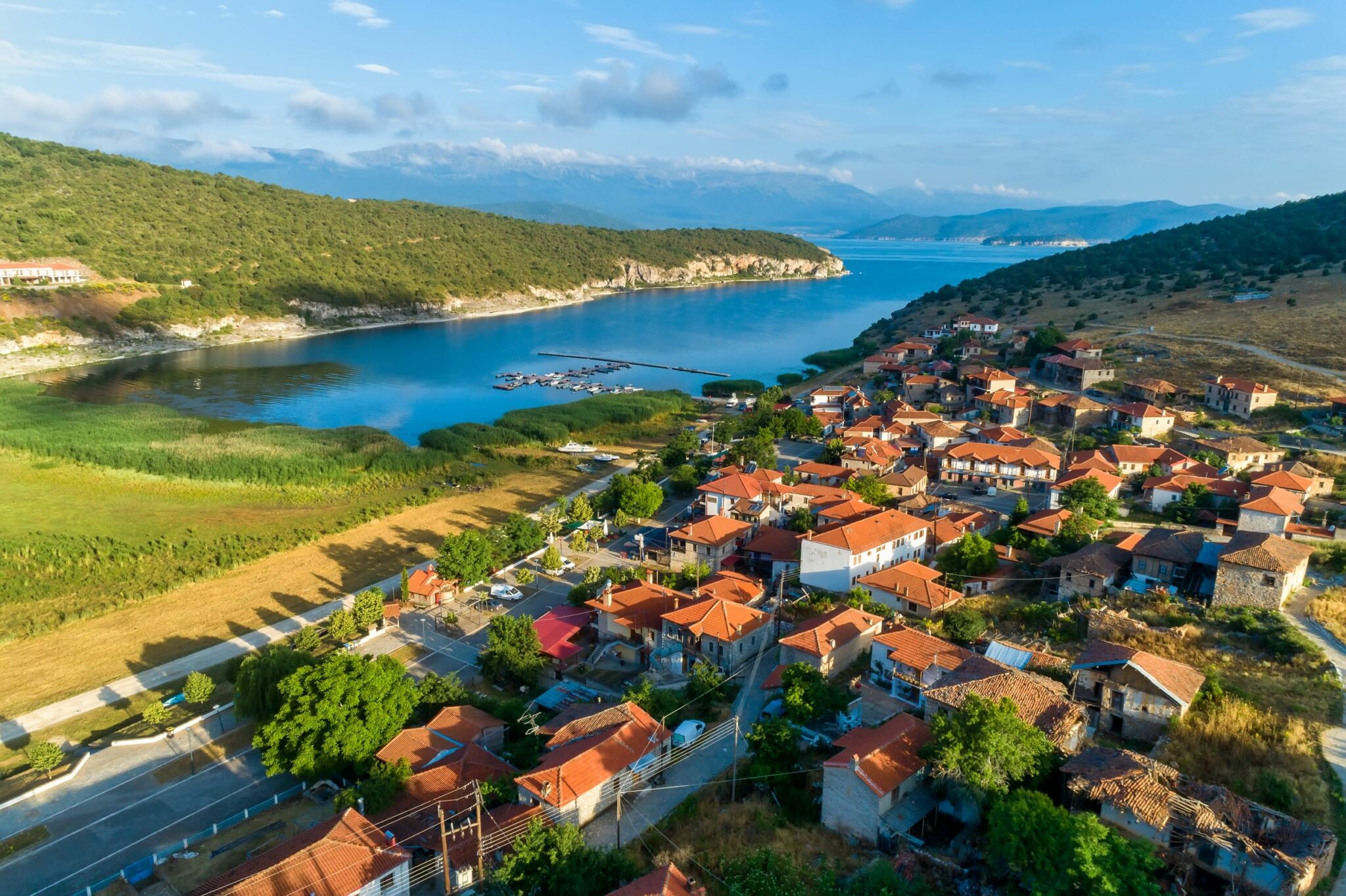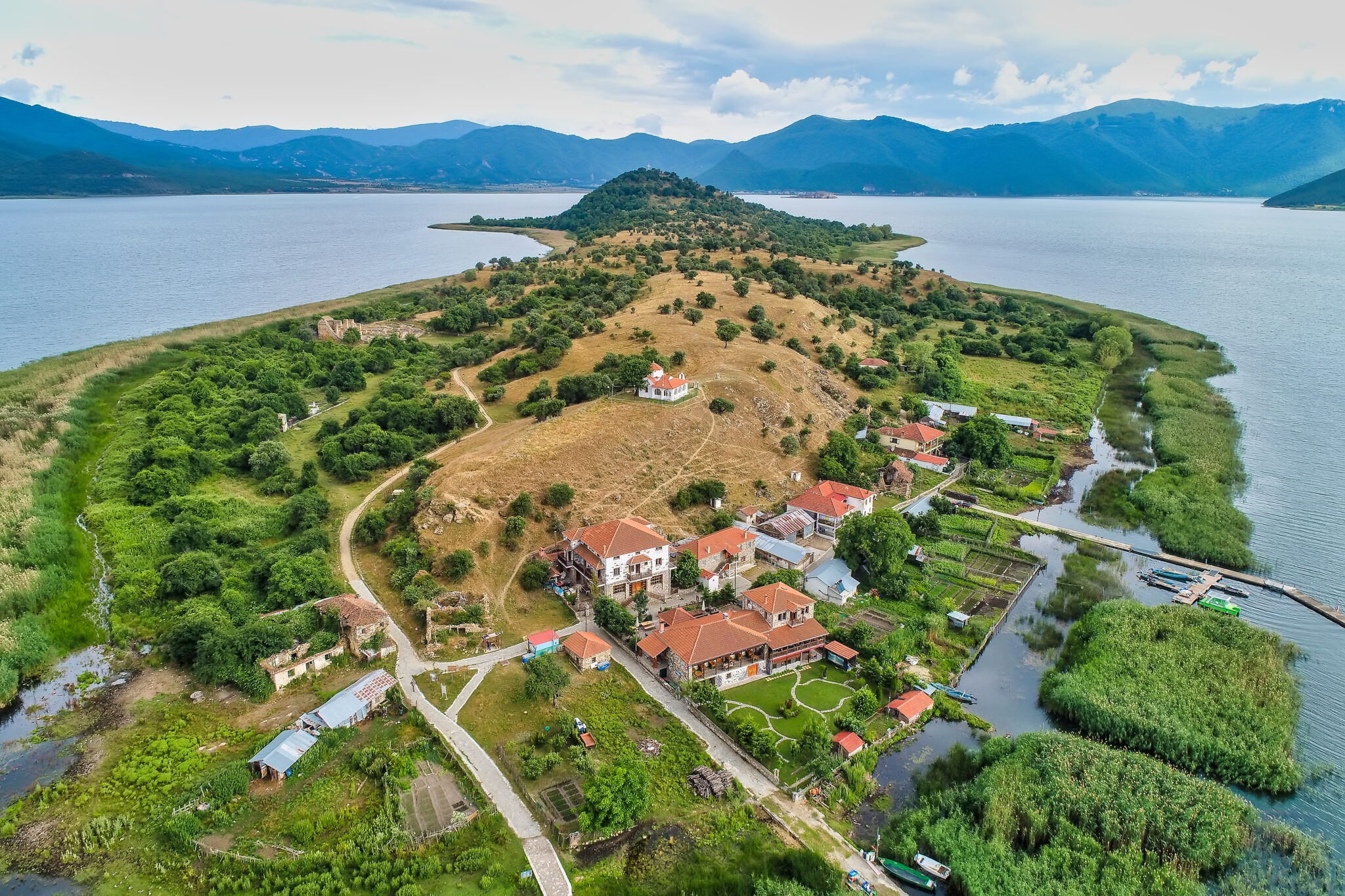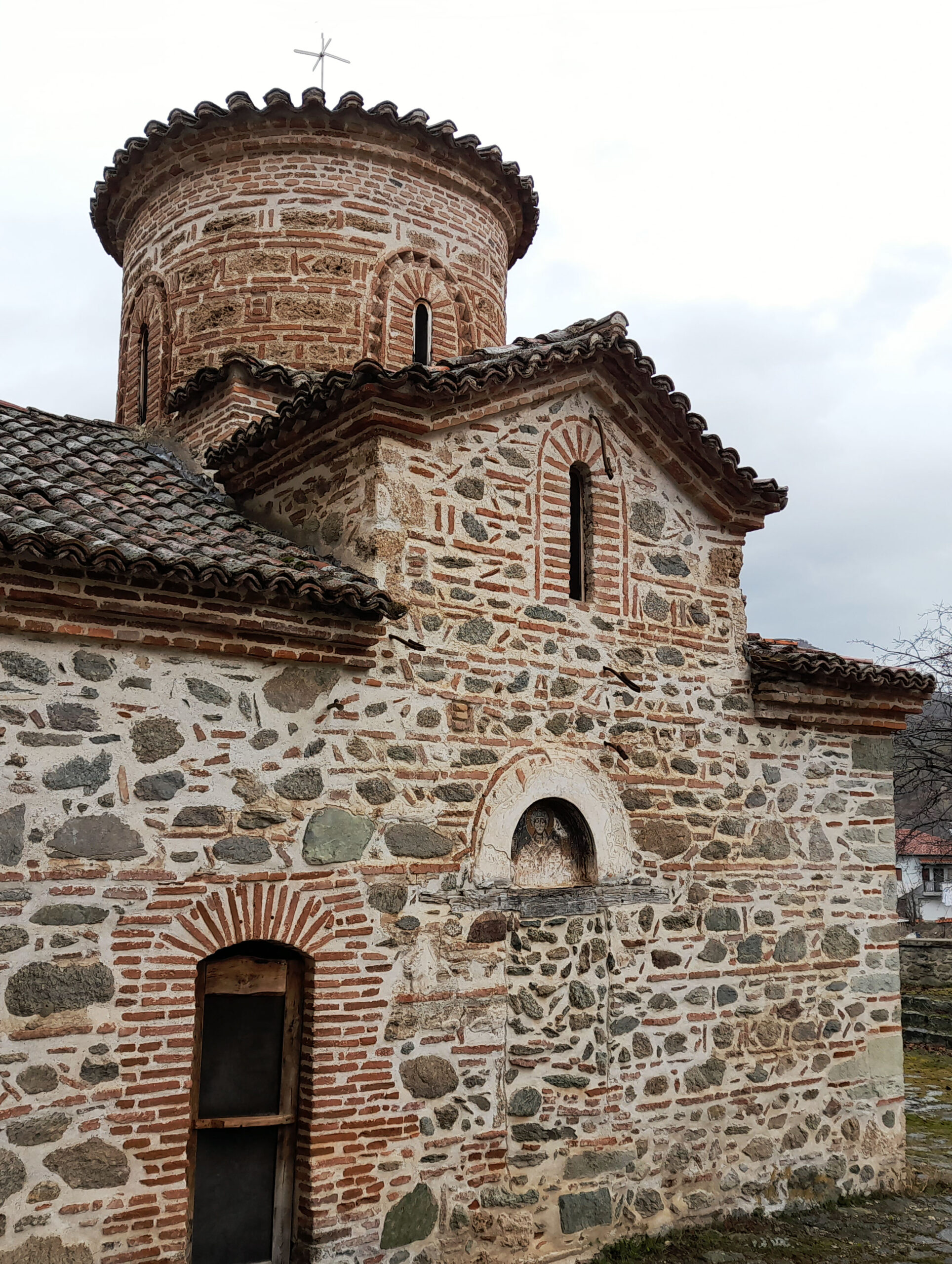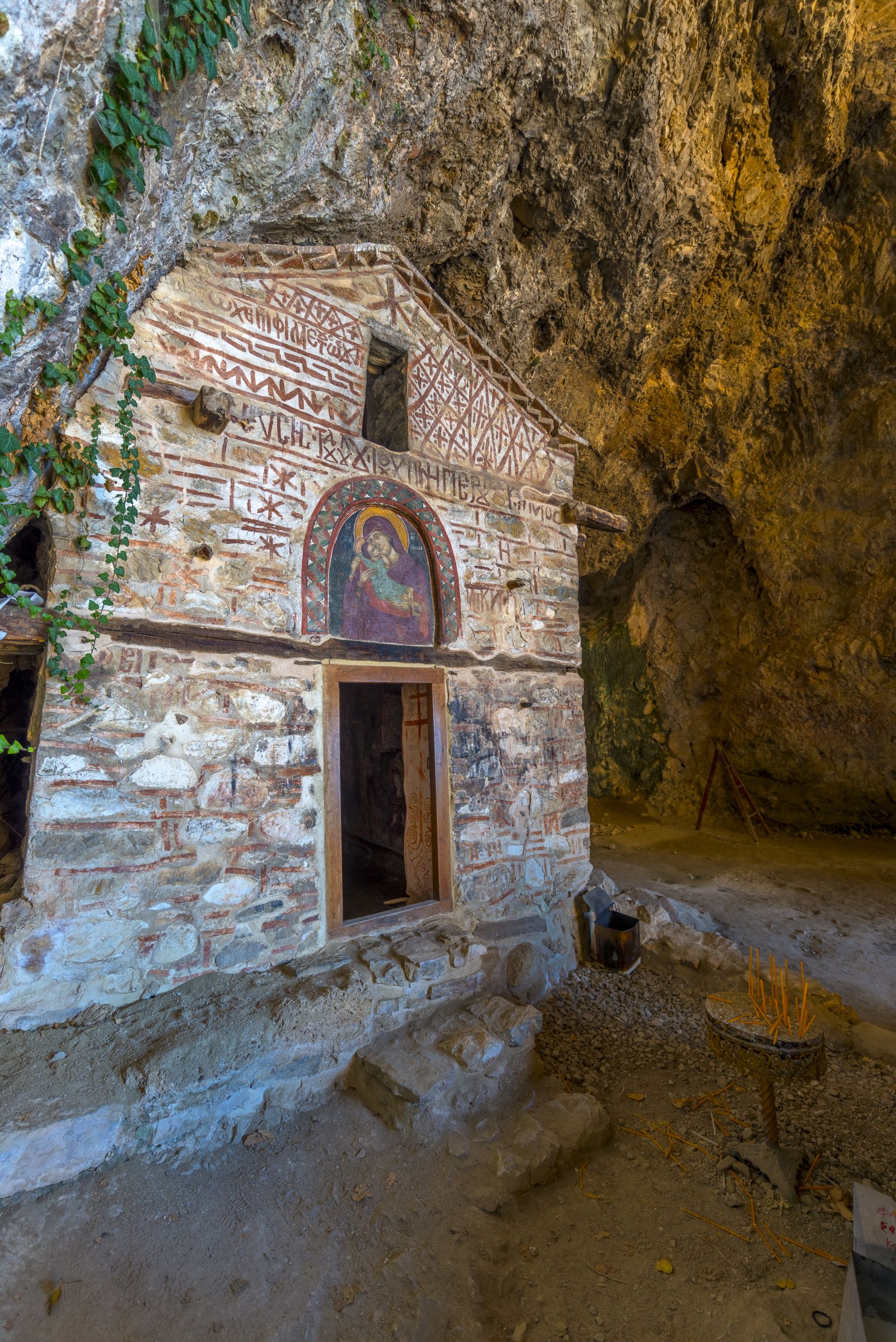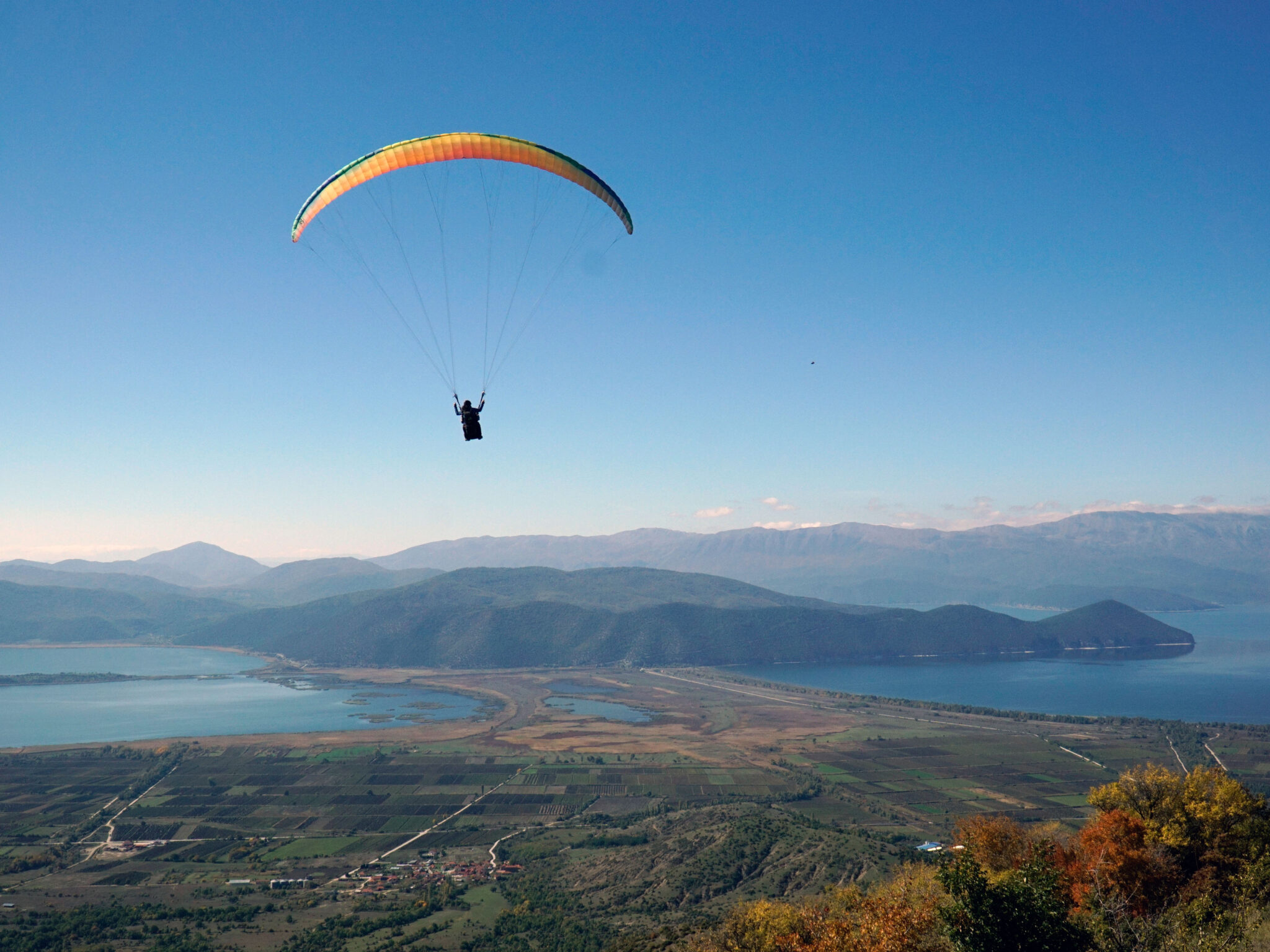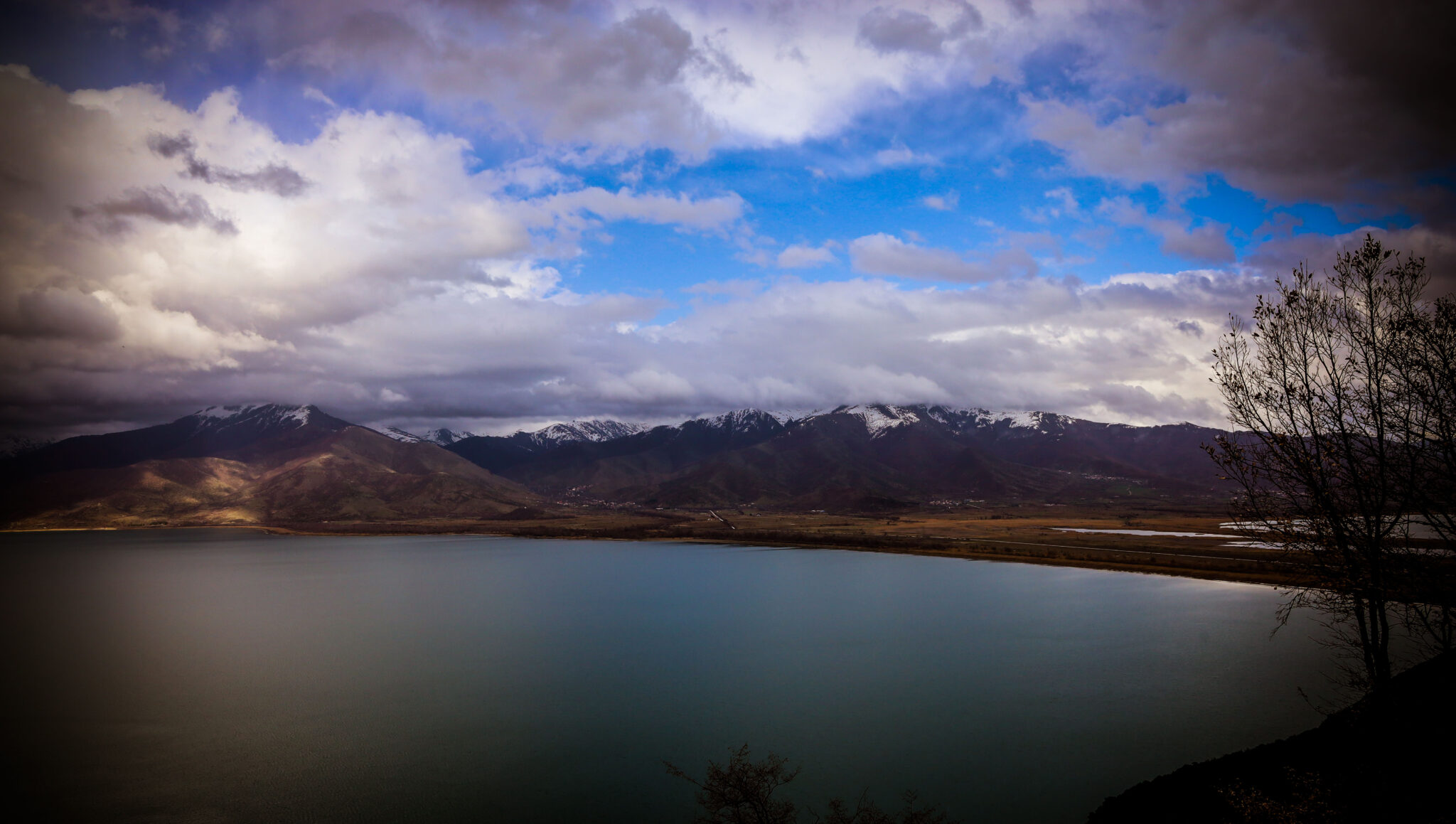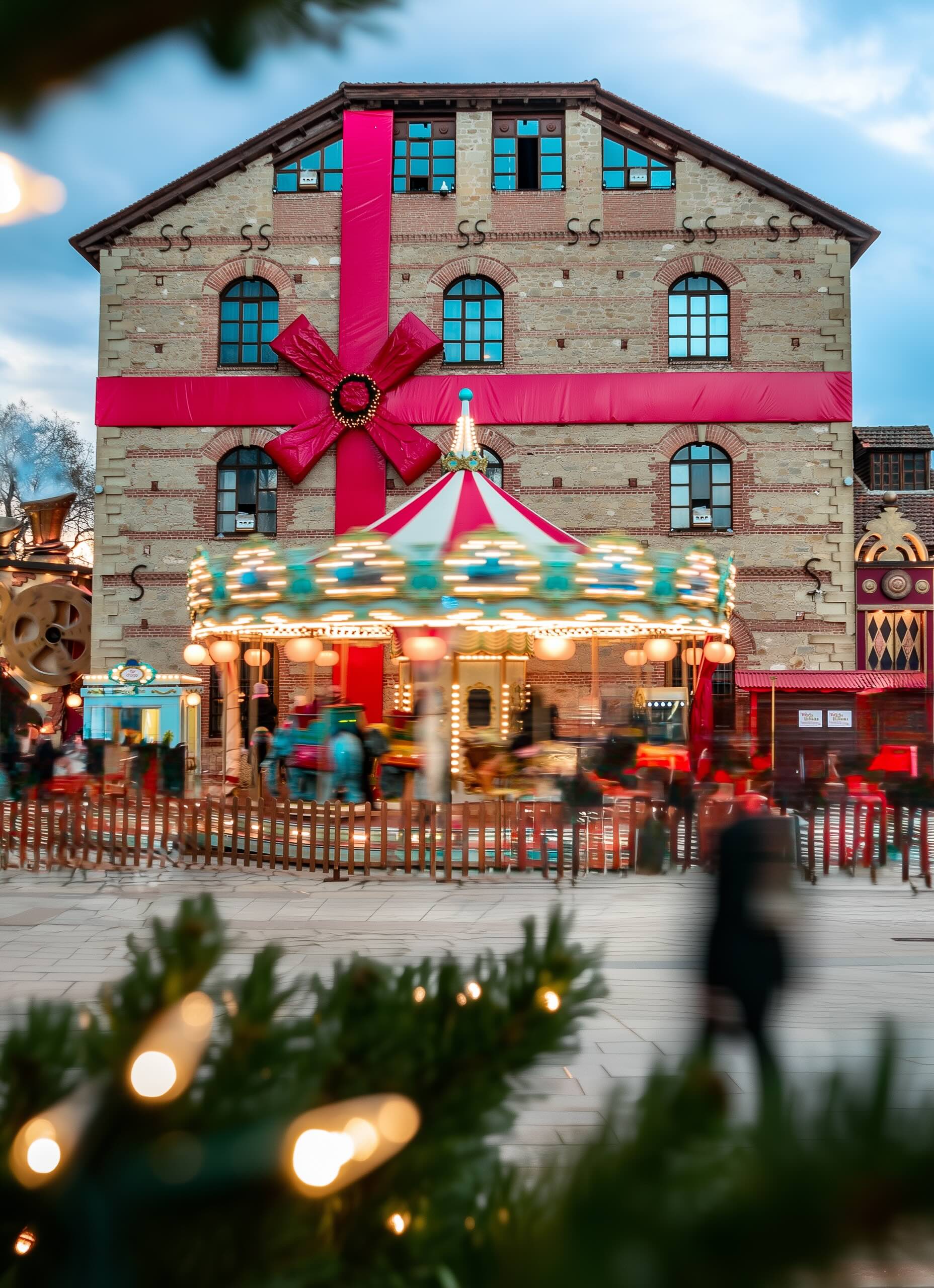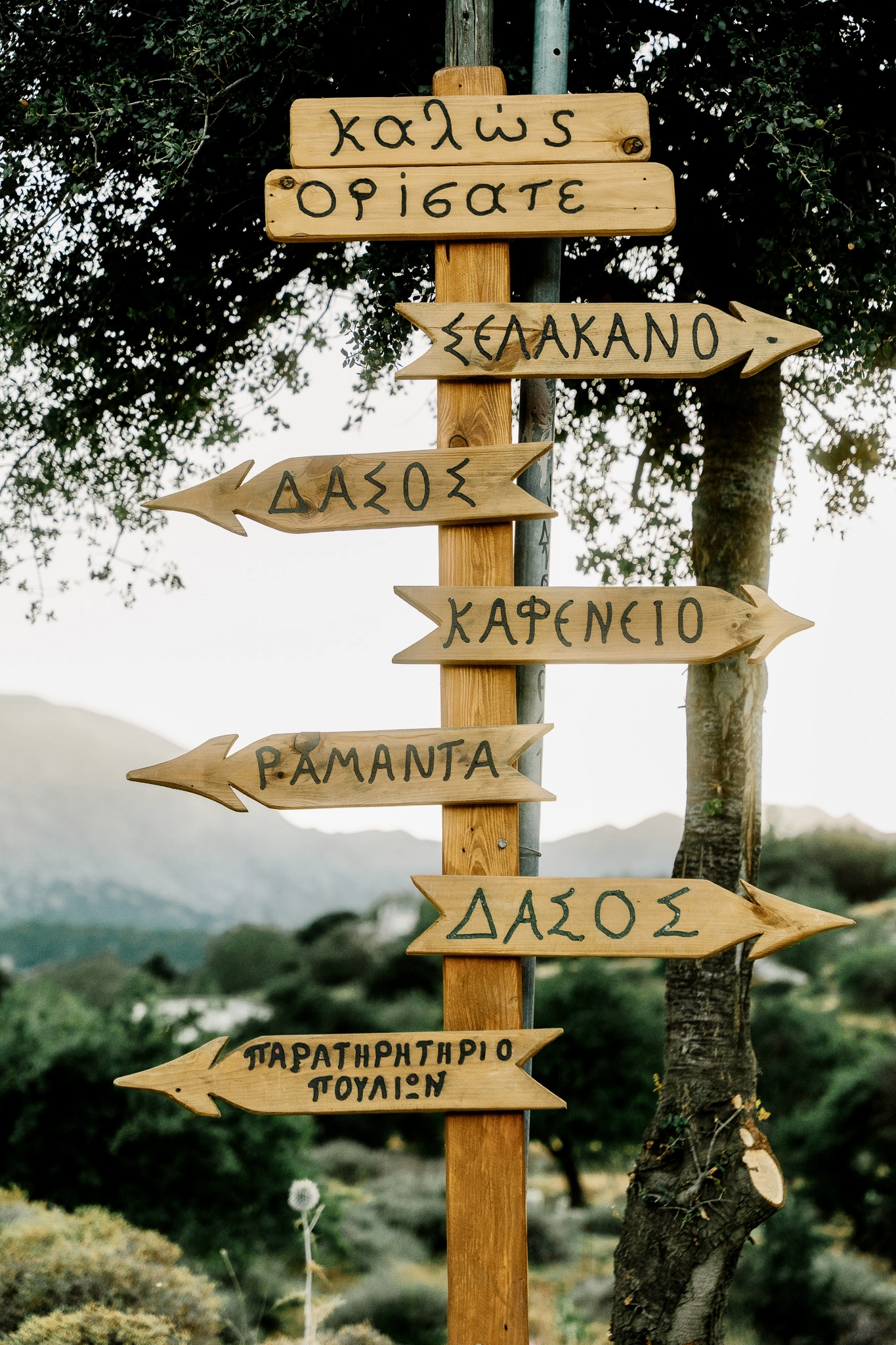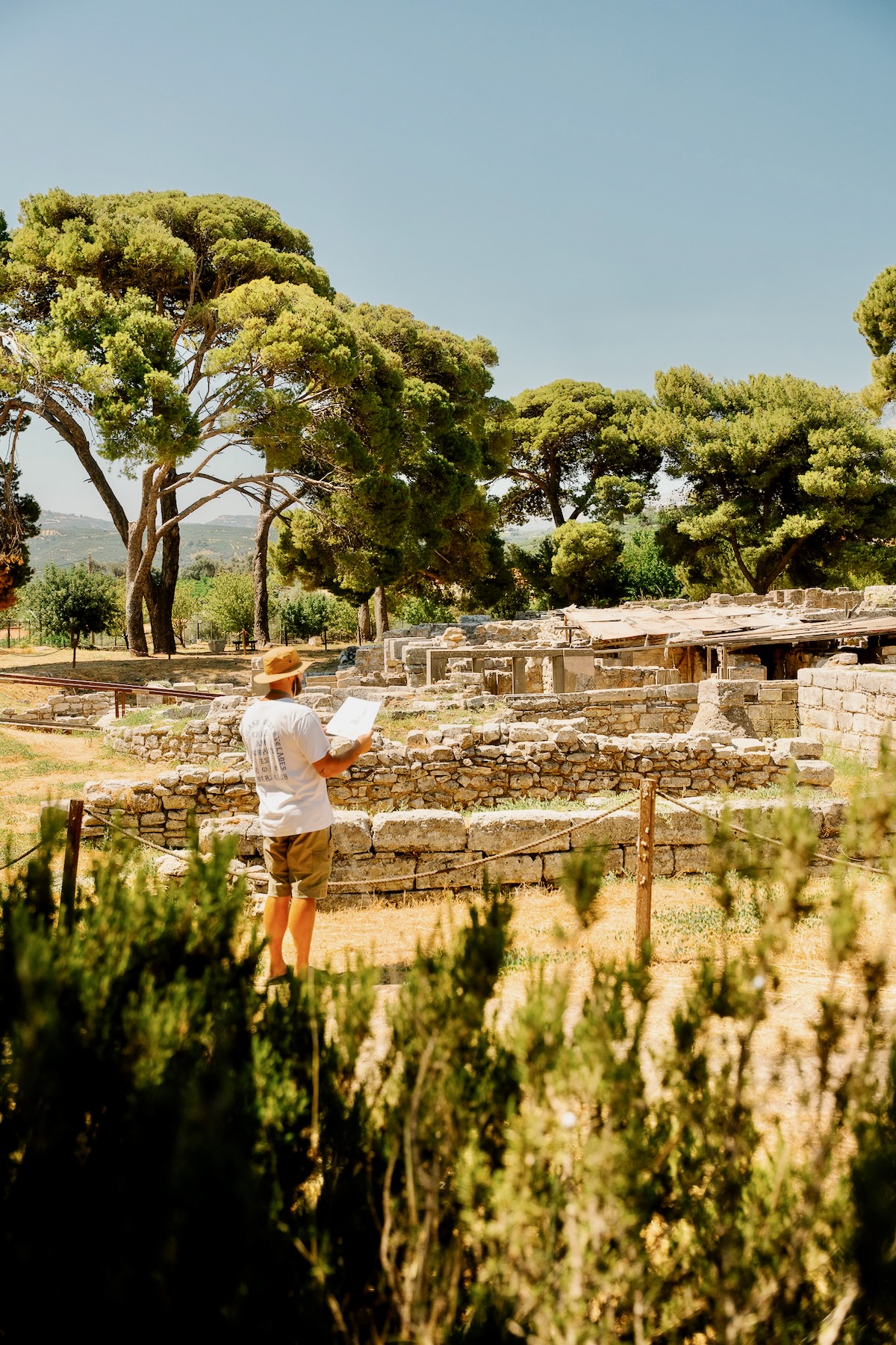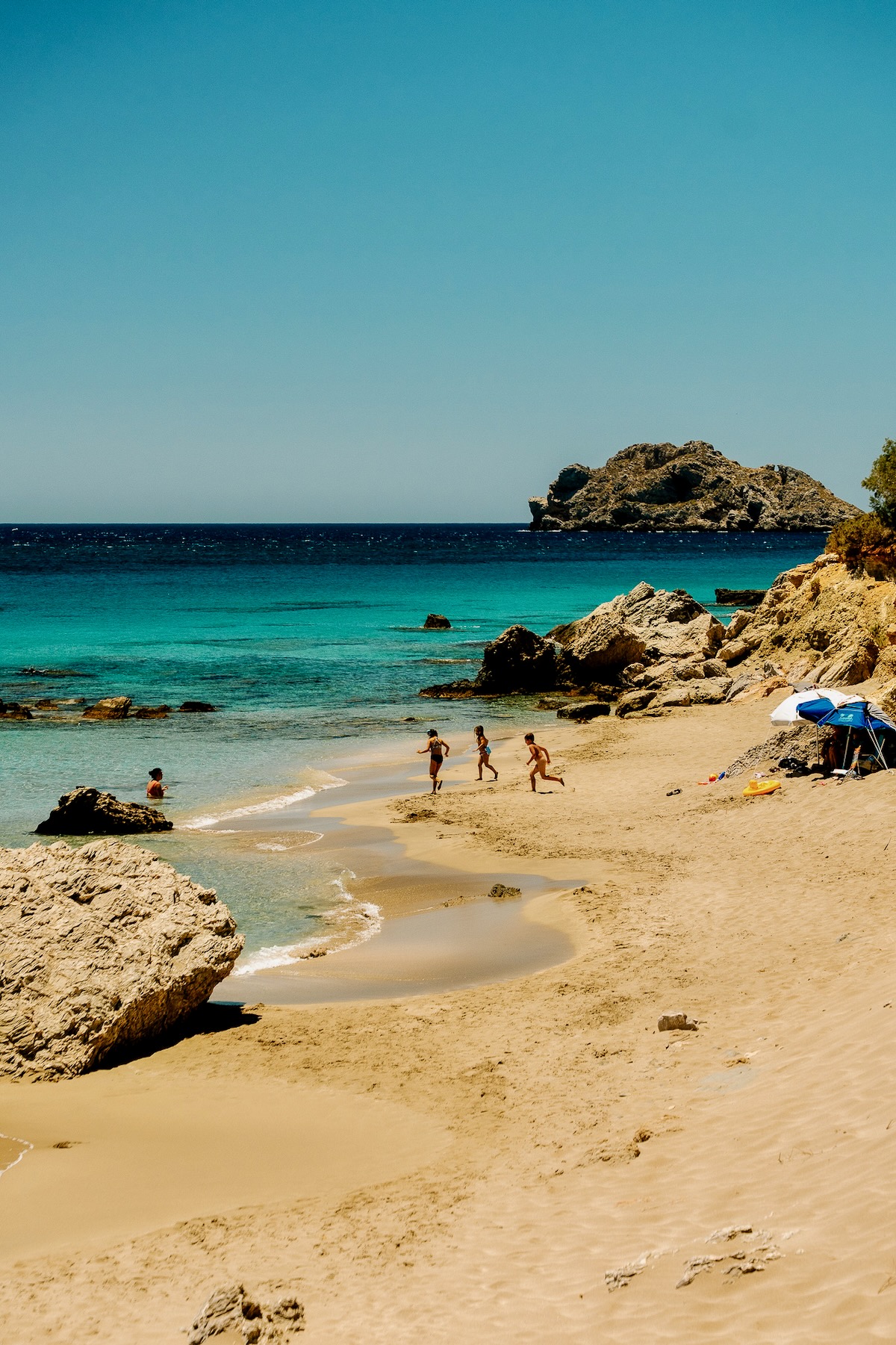We travelled to the north-eastern edge of the country, to an otherworldly but stunning place, where the only thing breaking the calmness is the sound of birds.
Here, time passes differently compared to what most of us are used to. From the first moment you step your foot there, you feel the vibe of a place that, despite the hardships, remains authentic.
Many things have been written about the Prespa lakes. In the past, the Mikri and Megali Prespa (small and large Prespa) were one. Today they cover 300 km² in the west of Florina, in the shadow of the mountains Varnountas, Vrontero and Triklario. Megali Prespa is the largest lake in the Balkans (288 km²). It’s on the borders of three countries, with only 22% of the lake belonging to Greece. While only a small part of Mikri Prespa (44 κm²), that is protected by the Ramsar Convention, belongs to Albania.
After visiting the Prespa lakes in the early spring, below are the things we recommend you try if you are in the area, through 10 experiences that will present the full glory of this remote part of Greece that remains authentic.
Unique nature
The Prespa lakes have rich and rare flora and fauna, making them a Wetland of International Importance. 275 bird species have been documented in the area, the lakes are home to 25% of the global population of the Dalmatian pelican and the great white pelican, to 2000 plant species, 42 mammal species (bear, otter, chamois etc), 11 species of amphibians, 21 reptile species, as well as 23 fish species.
The lakes are protected by the Ramsar Convention, as one of the ten Greek Wetlands of International Importance, and, since 1974, they are a national park. The epicentre of the national park is the wetland of Mikri Prespa, with the reeds and wet valleys. There is an information centre branch of the Natural Environment and Climate Change Agency (N.E.C.C.A.) in the Prespa area, in the village Agios Germanos, where you can learn about this rare wetland (www.fdepap.gr/23850 51870).
Picturesque villages
The Prespa villages stand out due to the local architecture with houses made using stone, wood, soil and reeds, materials that were easily available in the surrounding nature in the past. Agios Germanos and Psarades are listed as protected villages. Walking around their neighbourhoods and narrow streets, you’ll feel like you’re travelling back in time, when they were bustling with life. Other villages in the area, like the deserted Mileonas – with the mudbrick houses that are “melting” away in the rain – and Mikrolimni, the only village in Mikri Prespa that is right next to the lake with the scenic pier and the view of Vidronisi, a very small, uninhabited island that is home to rare bird species, are also interesting in terms of architecture.
At the lake’s island
The island of Agios Achilios is at the north edge of Mikri Prespa and is connected to the mainland by a 700-metre-long floating pedestrian bridge that was built 22 years ago.
Apart from the small scenic settlement with a population of 20, there still stands, on the island, the important Basilica of Agios Achilios, a three-aisled, wooden-roofed basilica built in the 10th century by the Bulgarian tsar Samuel, when he made the Prespa area the capital of his kingdom. In fact, he was buried in the right aisle of the church. At the top of the hill, where the contemporary church of Agios Achilios stands, the panoramic view of the lake and the surrounding area is really impressive.
Byzantine air
For centuries, the Prespa lakes have been a place of spiritual refuge as can be seen by the churches and the hermitages that date back to the 10th century. Apart from the Agios Achilios Basilica on the homonymous island, there is also the church of Agios Germanos (11th century) in Agios Germanos, the church of Agios Nikolaos (16th century) in Platy, that the locals also call Agios Sotiras, with its impressive icons, etc.
The south bank of Megali Prespa is full of small hermitages (14th -18th century) among the steep rocks, like those of Metamorfosi, of Panagia Eleousa, Analipsi etc. You can visit them on a boat tour of the lake, leaving from the bay of Psarades. Unfortunately, the Byzantine collection of Agios Germanos is not open to the public at the moment.
Routes in nature
If you’re fans of hiking or cycling, follow one of the marked routes around the lake and in the surrounding mountains. The Society for the Protection of Prespa has recorded and showcased ten hiking and three cycling trails – suitable for all ages and fitness levels– that will allow you to get to know the area’s beautiful “secrets”.
The trails are marked, while you can also download the app at the Society’s webpage, and there’s also printed material at the only restored watermill in operation in the Prespa area, north-west of Agios Germanos (www.spp.gr / tel.: 0030 23850 51211).
A land with a long history
The small villages in the area of the Prespa lakes, some of which are half-deserted and uninhabited, will impress you. They have mostly been deserted due to the dramatic events that took place in the area during the height of the Greek Civil War (summer 1949), and the battles between the Greek National Army and the Democratic Army of Greece. The cave-headquarters of Nikos Zachariadis still remains in the village Pyli, while in Vrontero there is a cave that was used as a hospital for the soldiers of the DAG.
The mountain slopes are full of stone-built pillboxes – carved in stone – and trenches, all of them bearing witness to an age that came with a very high price for the Prespa area. After the war, immigration and urbanisation further amplified the problem, and as result the population nowadays is less than 1000 people.
Boat rides and outdoor activities
Boat rides on the lakes are a unique experience that you must have. It will allow you to explore the aquatic world of the Prespa lakes from within, and show you the well-hidden secrets of Megali Prespa, like the Byzantine hermitages on the coastline of the Greek part of the lake, until the “Tripoint” where the Greek borders meet the borders of Albania and North Macedonia. At the Mikri Prespa, you can take boats – even green, solar energy boats – from the pier of Agios Achilios and of Mikrolimni. (Tour: Germanos Hristianopoulos -Psarades, tel.: 0030 6942503863).
If you like more thrilling activities in nature, try paragliding. You’ll experience total freedom and will be able to admire the beauty of the Prespa lakes from above. It’s a perfectly safe activity since you’ll be with a trainer from Eco Tourismo (www.ecotourismo.gr / tel.: 0030 6976876423)
Warm hospitality
At the Prespa area, you’ll find hotels and warm welcoming guesthouses, catering to every need. Most of them are of more traditional architecture with stone and wood, in harmony with nature. You can find a full guide at the Prespa Tourism Association page (www.prespatourismassociation.com) with a great selection of accommodation options. We stayed at the Prespa Resort, in the village Platy, overlooking the lake, that has great traditional architecture and great artwork. The tallest crane nest in Europe (at 950 m height) is located right next to the hotel, and at the moment it’s occupied, and so, is one of the village’s attractions. (www.presparesort.gr / tel.: 0030 2385051400).
Local products
The Prespa beans (giant elephant beans and plake (flat) beans) are known for their taste and are a protected geographical indication (PGI) product. A large part of the population grows beans for a living. The same is true about fishery in the lakes (Eurasian carp, eels, rutilus, flathead grey mullet etc). The salted rutilus is amazing and it goes really well with the famous Florina pepper, local meat, pickles and of course tsipouro (traditional pomace raki). At Lefkonas, you’ll find the cottage industry “Prespa Top” with bean and pepper products. (www.prespa-products.gr / tel.: 0030 2385046033) while the “Nona” organic mountain tea (Sideritis Scardica), grown on Vrontero, is great (www.facebook.com/kthma.nona / tel.: 0030 6978698872).
Prespa gastronomy
The picturesque taverns and restaurants in Prespa, on the whole, use local ingredients. Try the bean soup, the oven-baked gigantes beans, the Florina peppers stuffed with mizithra cheese or trachanas (a traditional kind of pasta made with flour milk or yogurt), and, of course, fish from the lake like Eurasian carp (charcoal grilled or fried) or the rutilus either fresh or salted. Ask for the specials of each restaurant (you can find a list here: www.prespatourismassociation.com) and enjoy the culinary wealth of Prespa.
We tried the local delicacies at: “Prespion” (Agios Germanos /tel.: 0030 2385051442), “Agios Achilios” (Agios Achilios / tel/: 0030 2385046601), “I Sintrofia” (Psarades / tel/: 0030 2385046107), “To spitiko tis Loukias” (Mikrolimni / tel.: 0030 2385051964), “Psaradika tou Hasou” (Mikrolimni / tel.: 0030 2385046803).
The Prespa lakes on the map
You reach the Prespa lakes via Florina or Kastoria. They are 655 km (7-hours-and-37-minutes-drive) from Athens and 230 km (3-hours-and-39-minute-drive) from Thessaloniki. The nearest airport is that of Kastoria (75 km, 1-hour-and-9-minutes-drive).
Information
www.prespatourismassociation.com
Read also:
Three days (and nights) in Florina
Inside the café that became the setting for the films of Theo Angelopoulos



